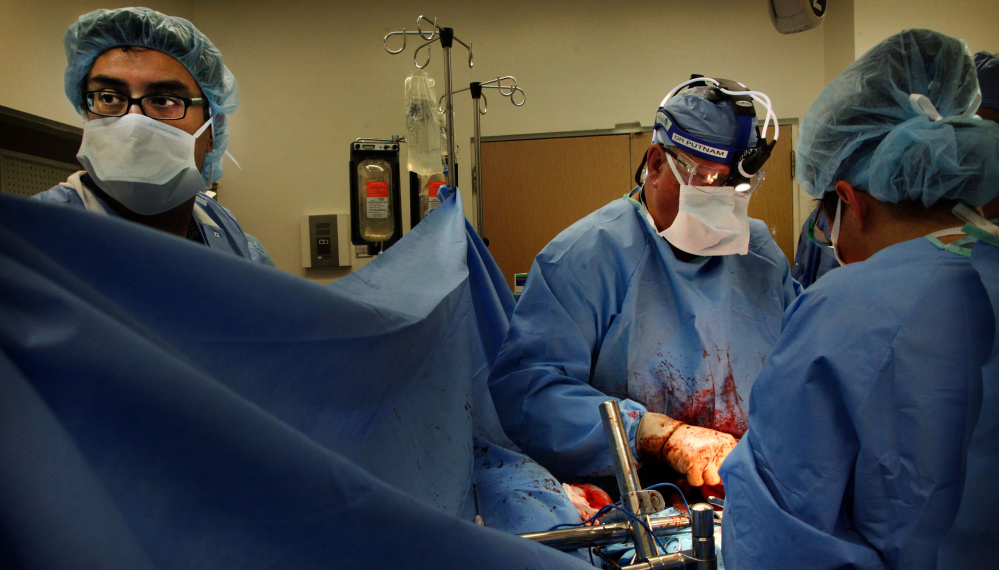Americans paid more than $6.6 billion over eight years to care for victims of gun violence, according to a new tally of hospital bills. And U.S. taxpayers picked up at least 41 percent of that tab.
That’s just the tip of the iceberg, say the authors of a study published this week in the American Journal of Public Health. Their sum does not include the initial – and very costly – bill for gunshot victims’ care in emergency rooms. Nor does it include hospital readmissions to treat complications or provide follow-up care. The cost of rehabilitation, or of ongoing disability, is not included either.
“These are big numbers, and this is the lowest bound of these costs,” said Sarabeth A. Spitzer, a Stanford University medical student who co-wrote the study. “We were surprised” at the scale.”
That, arguably, makes gun-injury prevention a public health priority, Spitzer said.
The Repulicans’ health care reform measure would reduce federal contributions toward Medicaid, which foots roughly 35 percent of the hospital bills for gunshot victims. The Republican plan would also cut payments to the hospitals that absorb much of the cost of caring for uninsured patients, whose hospital bills accounted for about 24 percent of the $730 million-per-year tab.
“These are expensive injuries,” Spitzer said.
The new research underscores many grim facts of gun violence in the United States: In 2014, for instance, 33,700 people died of gunshot wounds, but an additional 81,000 were treated for nonfatal firearms injuries.
Close to two-thirds of the gun deaths were self-inflicted, and those who commit suicide with a gun rarely survive long enough to be admitted to a hospital.
To come up with their tally, Spitzer and her colleagues scoured the hospital bills of 267,265 patients across the country who were injured by guns between 2006 and 2014.
These patients were overwhelmingly male, and most of them were admitted to large, urban teaching hospitals.
About 43 percent of the victims were treated in the South, where the proportion of uninsured patients was highest.
And nationally, 30 percent of gunshot victims treated in hospitals during the study period were insured by Medicaid.
Spitzer’s work was underwritten by a Stanford fund for “medical scholars.”
As a medical student interested in trauma surgery, she said she hopes that more research will prompt public policies to reduce such injuries.
Send questions/comments to the editors.



Success. Please wait for the page to reload. If the page does not reload within 5 seconds, please refresh the page.
Enter your email and password to access comments.
Hi, to comment on stories you must . This profile is in addition to your subscription and website login.
Already have a commenting profile? .
Invalid username/password.
Please check your email to confirm and complete your registration.
Only subscribers are eligible to post comments. Please subscribe or login first for digital access. Here’s why.
Use the form below to reset your password. When you've submitted your account email, we will send an email with a reset code.